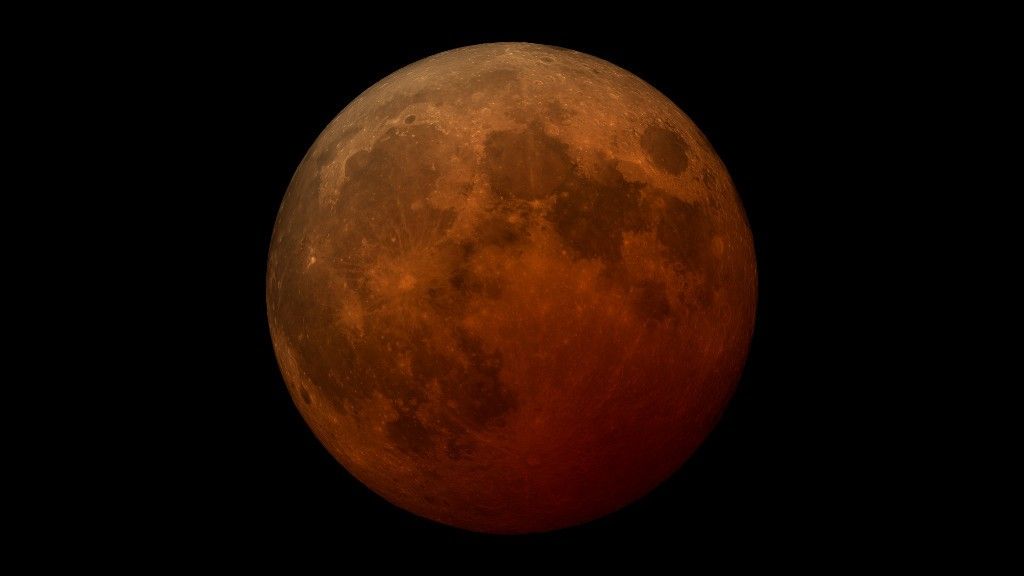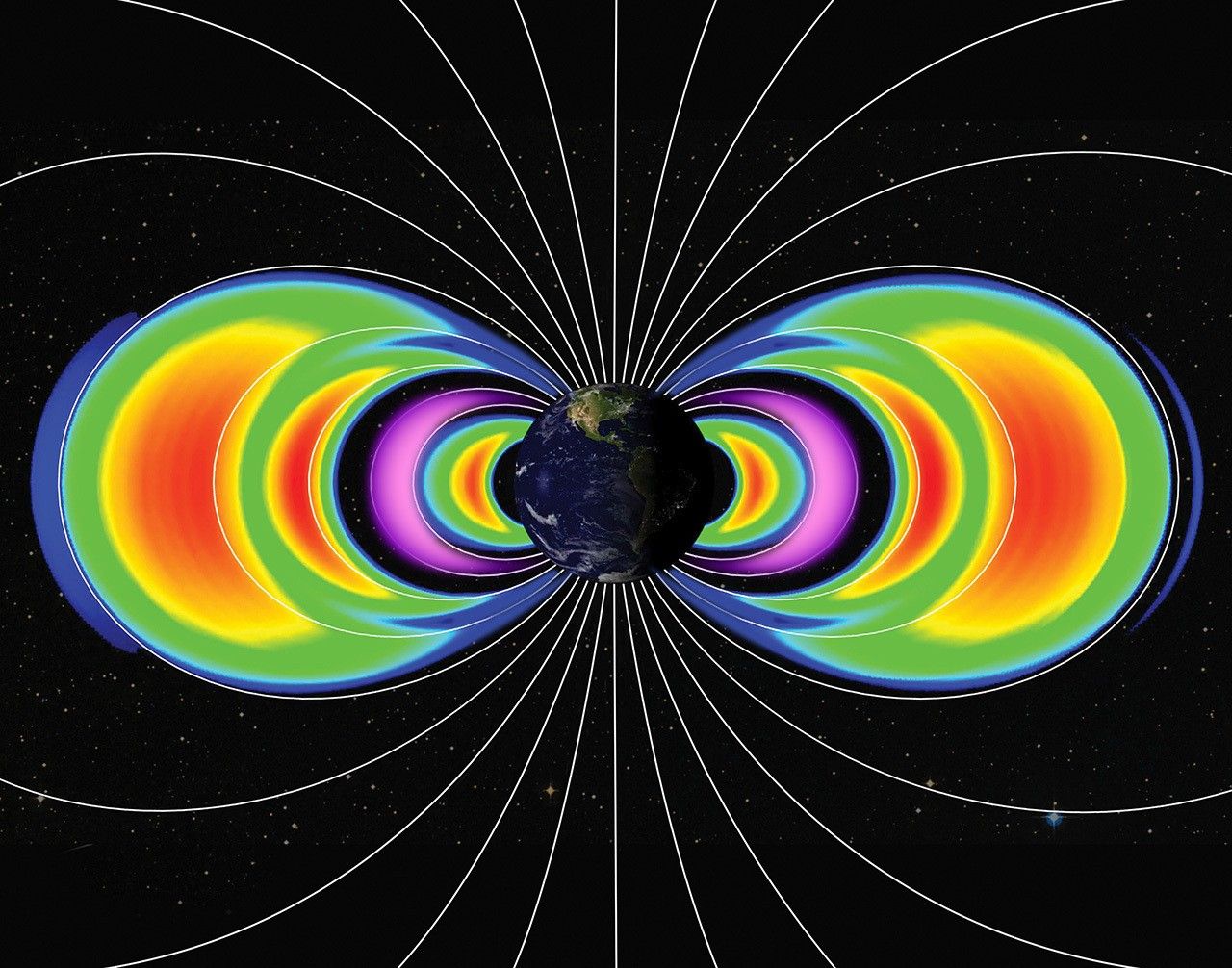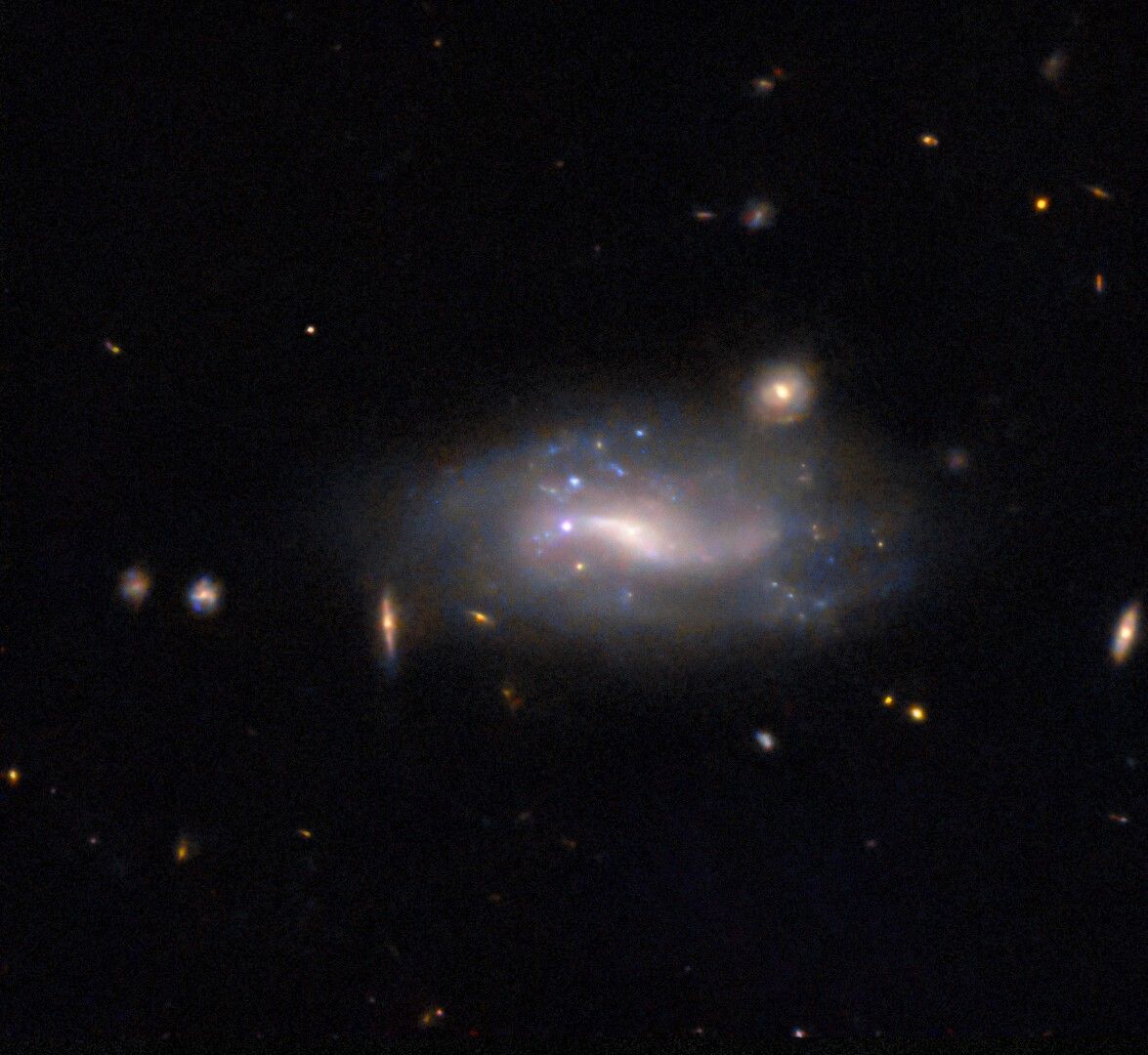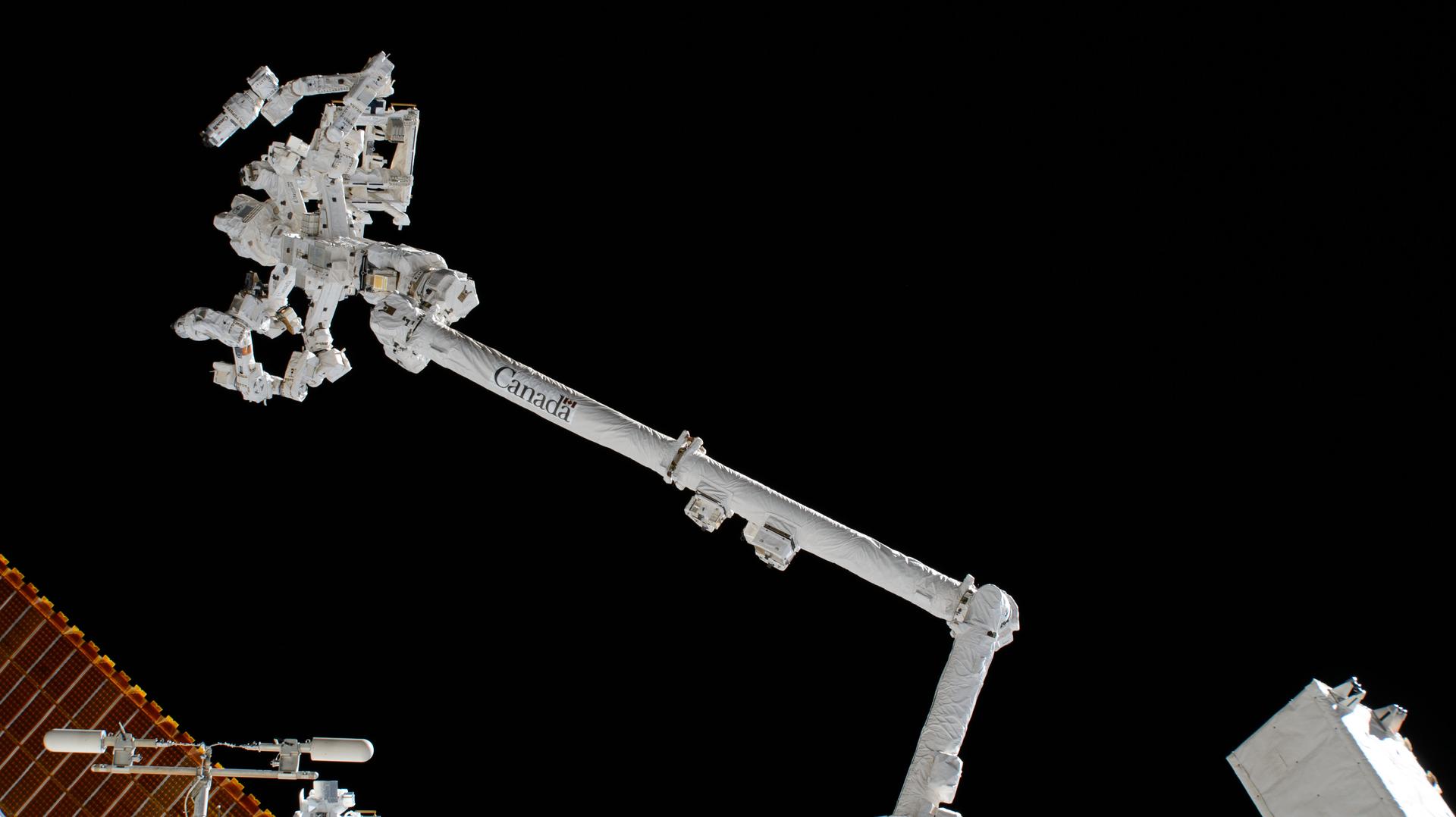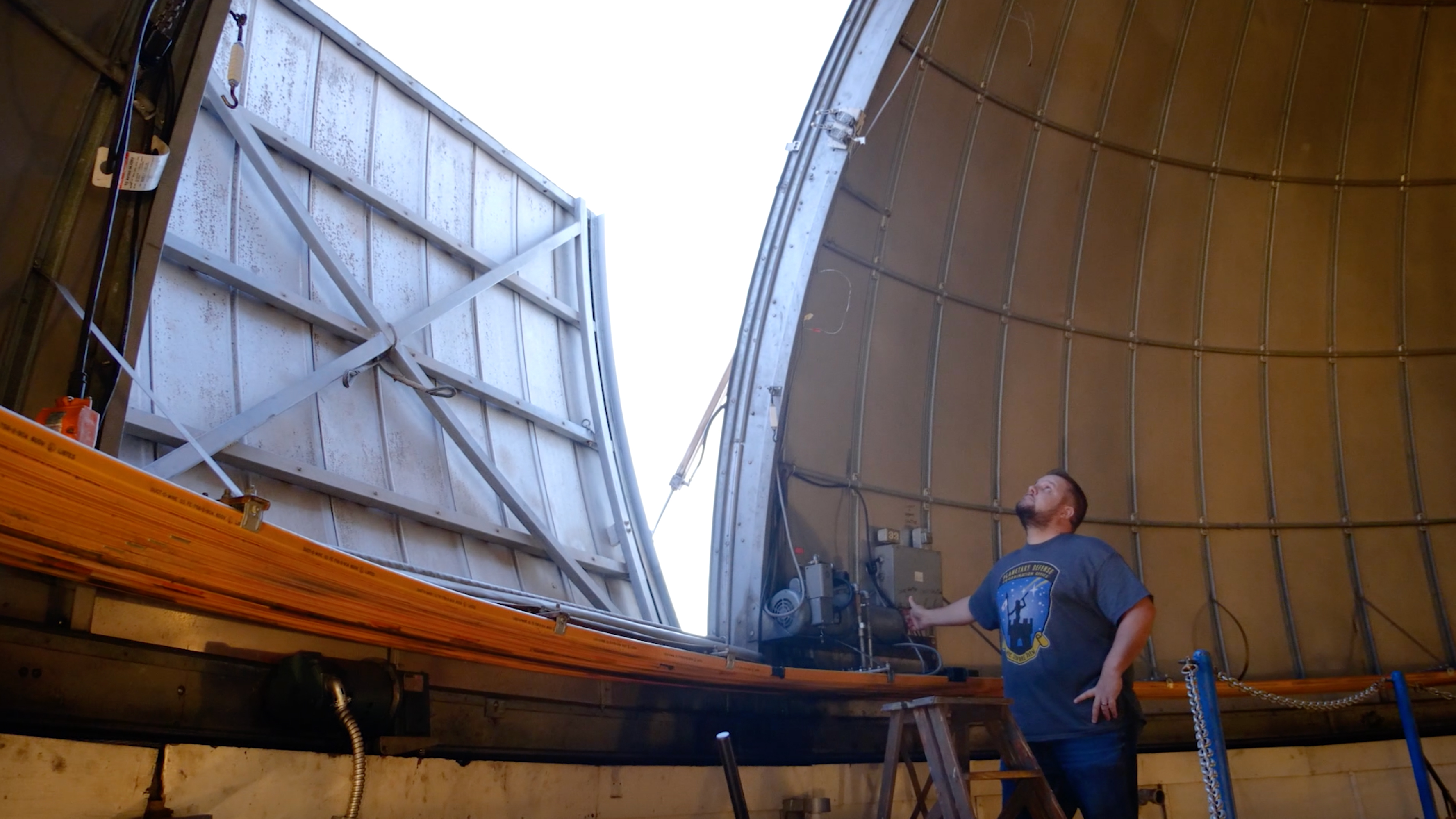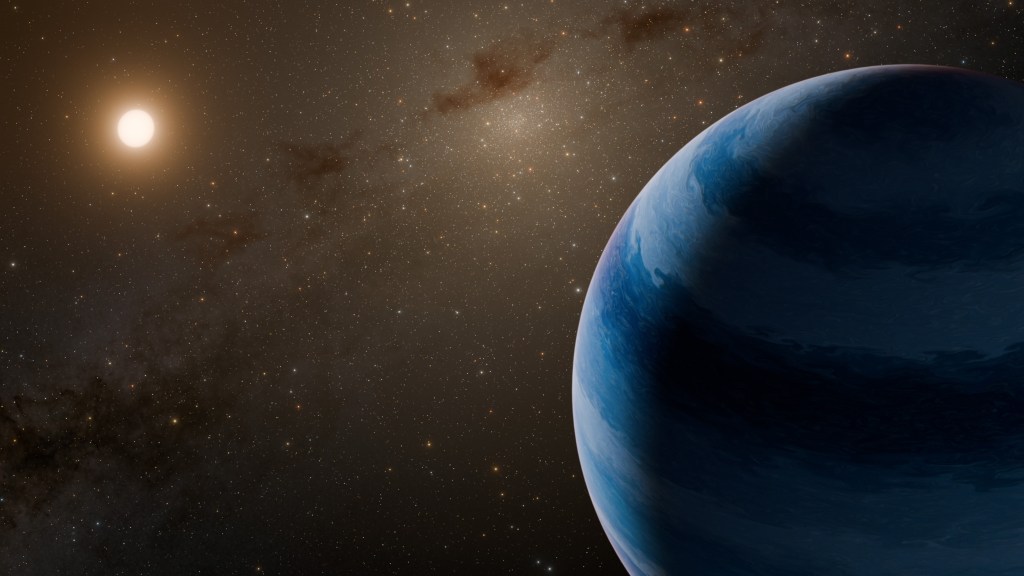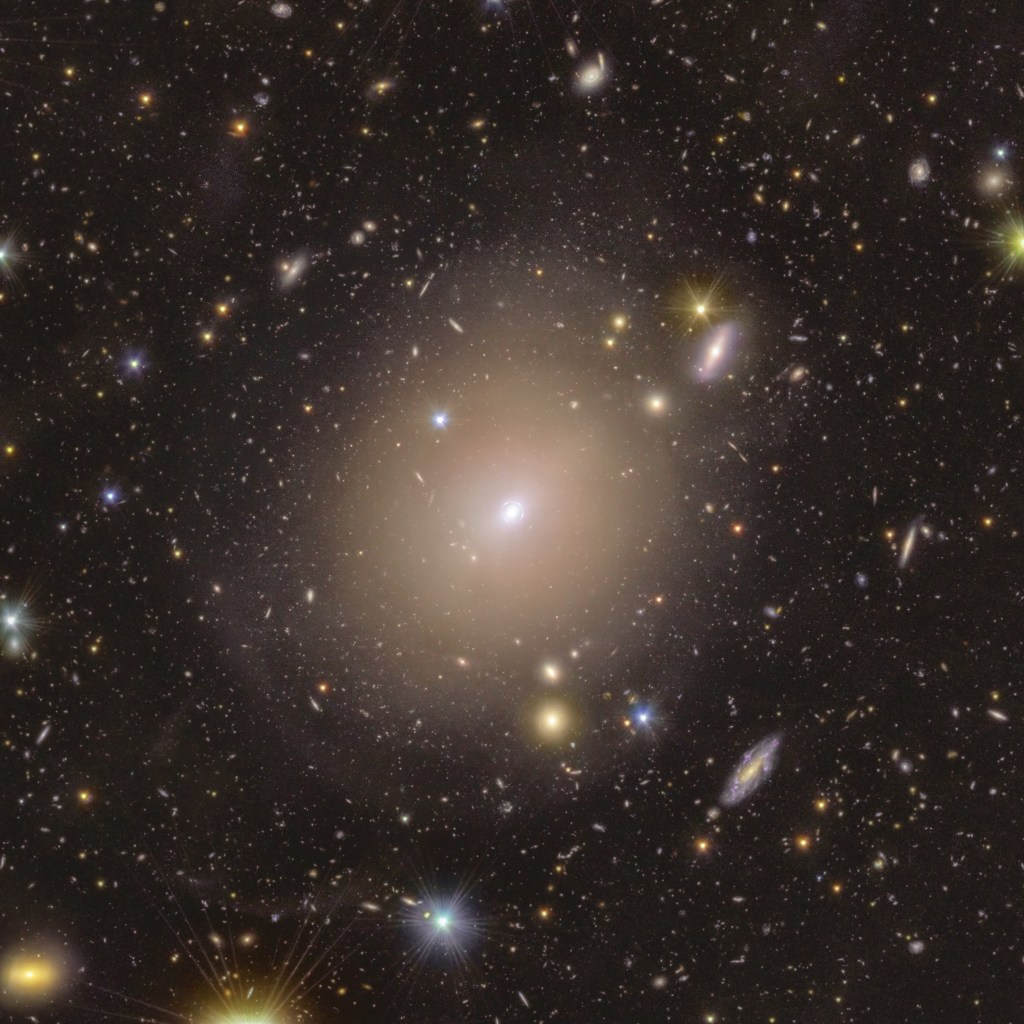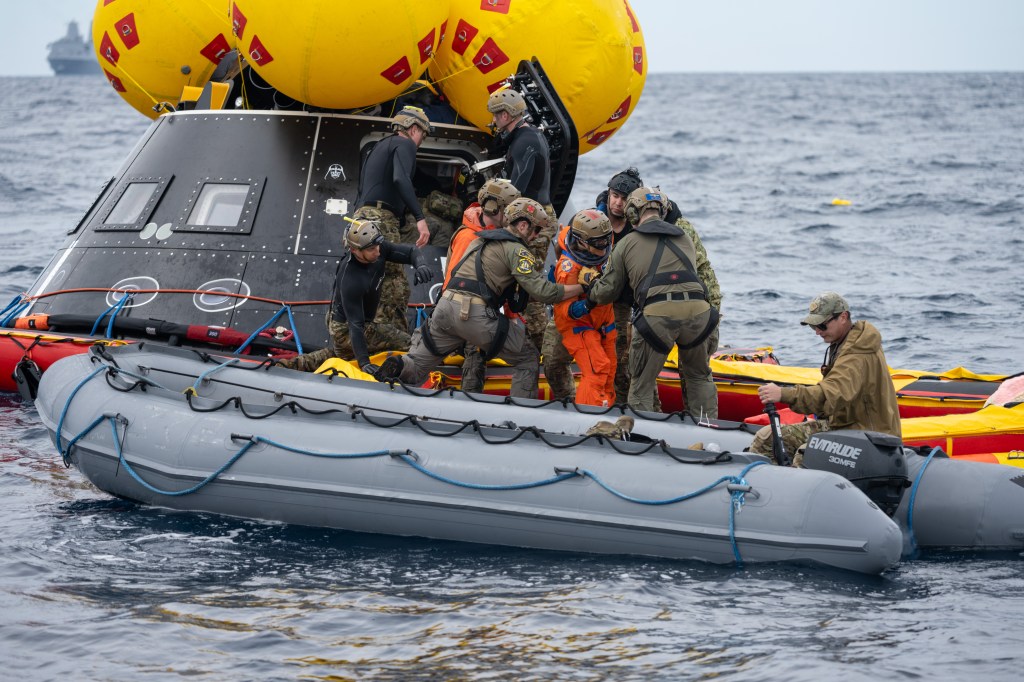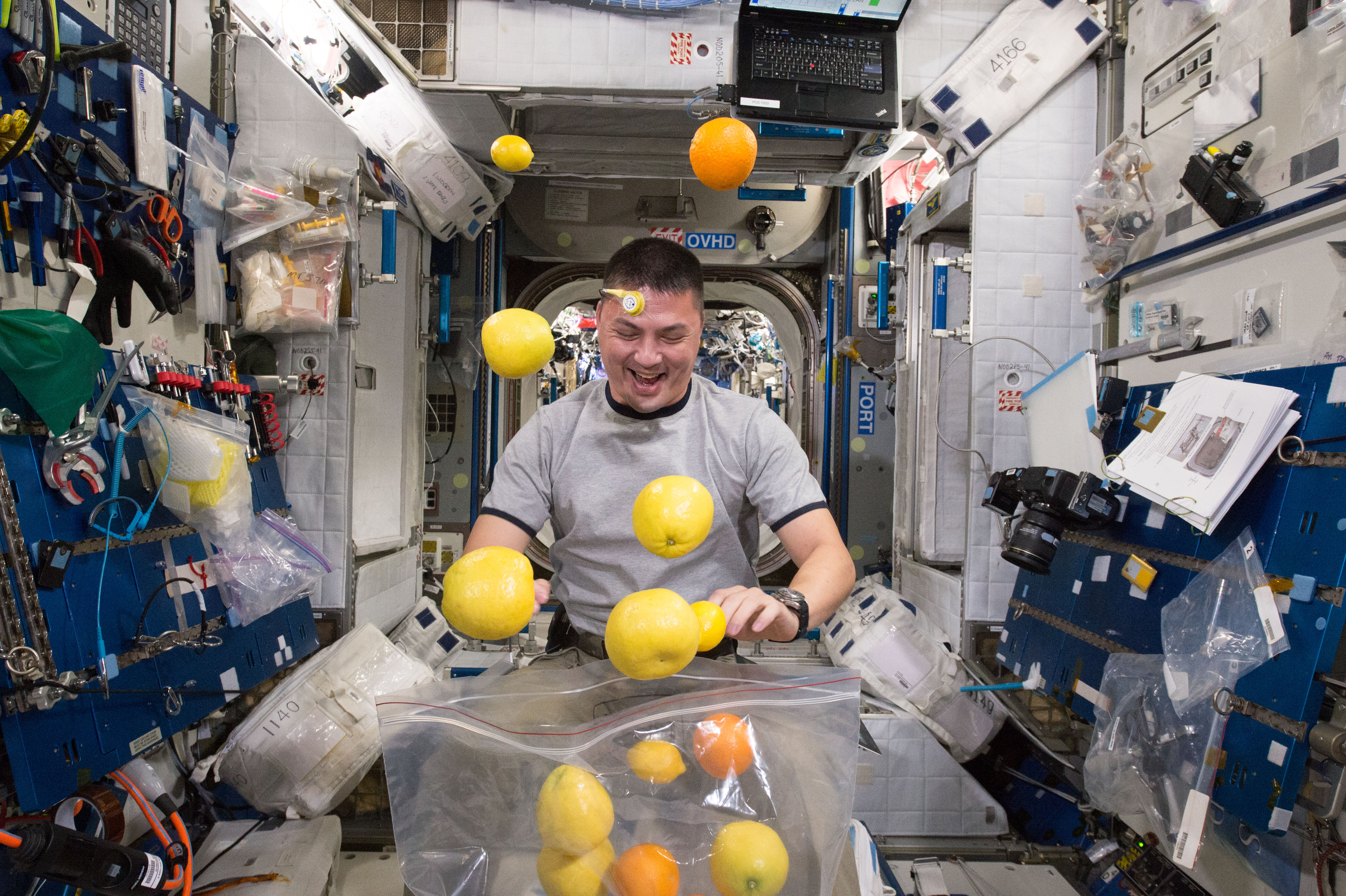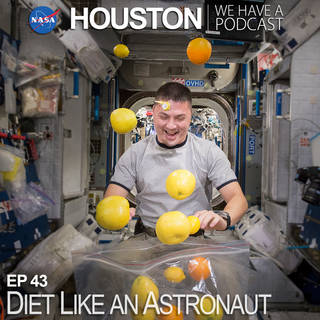
“Houston We Have a Podcast” is the official podcast of the NASA Johnson Space Center, the home of human spaceflight, stationed in Houston, Texas. We bring space right to you! On this podcast, you’ll learn from some of the brightest minds of America’s space agency as they discuss topics in engineering, science, technology and more. You’ll hear firsthand from astronauts what it’s like to launch atop a rocket, live in space and re-enter the Earth’s atmosphere. And you’ll listen in to the more human side of space as our guests tell stories of behind-the-scenes moments never heard before.
Dr. Scott Smith, NASA nutritionist and the manager for nutritional biochemistry, discusses some pretty significant differences in the way astronauts have to eat in space versus the way we eat here on Earth. This episode was recorded on February 16, 2018.
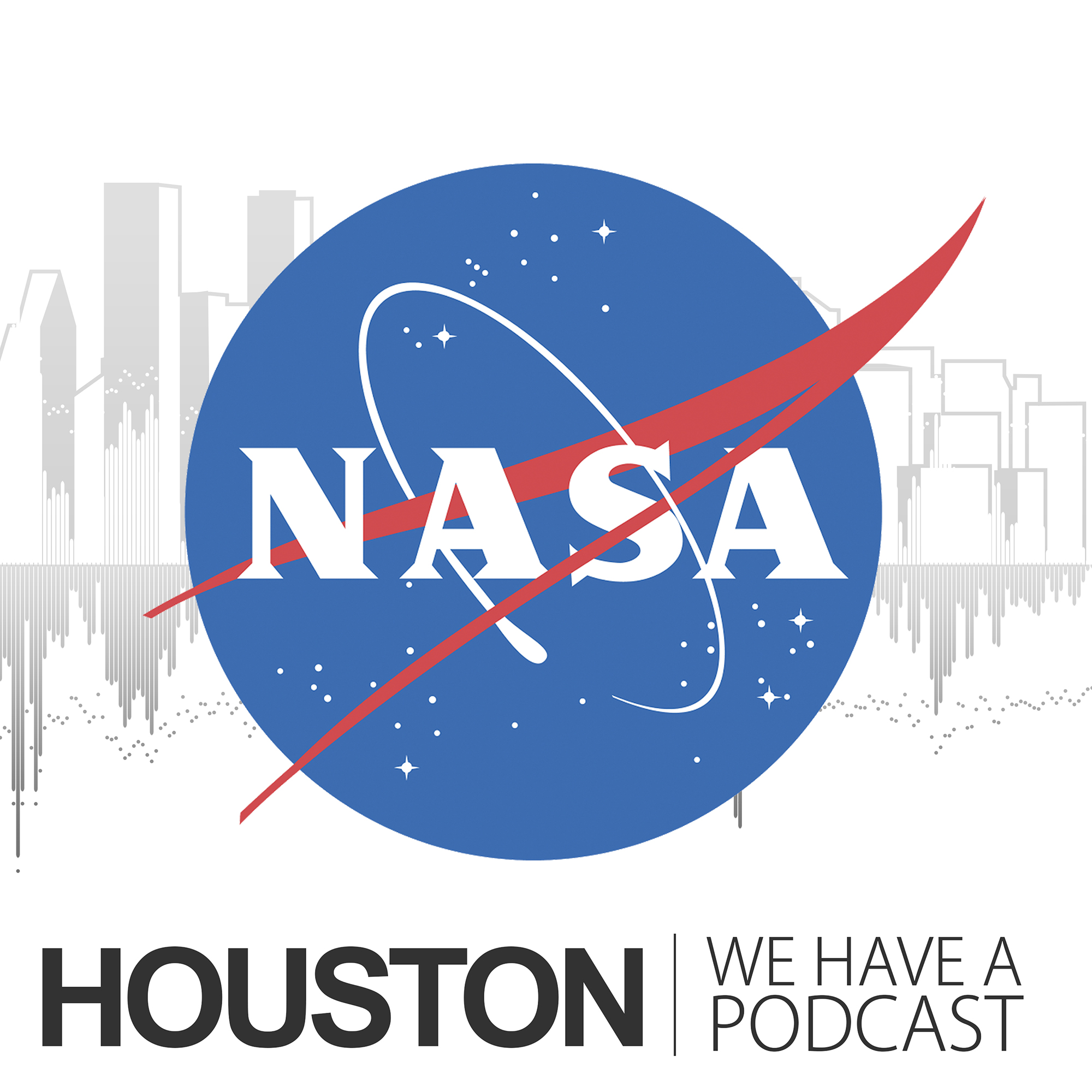
Transcript
Dan Huot (Host): Houston, we have a podcast. Welcome to the official podcast of the NASA Johnson Space Center. This is episode 43, diet like an astronaut. I’m Dan Huot and I’ll be your host today. And on this podcast we bring in the experts. NASA scientists. Engineers. Astronauts. Anybody who can let you know about the coolest stuff going on right here at NASA. Today we’re talking about nutrition in space. More specifically, what the astronauts have to eat to stay healthy and functional during long-duration space flight. There’s a lot of folks working on that right here at the NASA Johnson Space Center. Including my guest Dr. Scott Smith, NASA nutritionist and the manager for nutritional biochemistry. There’s some pretty significant differences in the way astronauts have to eat in space versus the way we eat here on Earth. And so we sat down to learn more about what the body needs to thrive in space. And how we’re preparing to tackle some big challenges for future long-duration missions into deep space.
So with no further delay, let’s go light speed and jump right ahead to our talk with Dr. Scott Smith. Enjoy.
[ Music ] All right, I’m here with Dr. Scott Smith. Scott, you’re the, can I call you Scott?
Scott Smith: You can call me Scott.
Host: Scott, just for the sake of keeping things easy. So you’re the manager, and this is a mouthful as so of our guests are, for nutritional biochemistry. You’re a NASA nutritionist. Start me off. What does that mean? What does your job kind of encompass here?
Scott Smith: Well, the nutrition biochemistry lab is responsible for, in essence, keeping crews healthy from a nutrition point of view. So we are not the food lab. I’m always very quick to point out we don’t make the Tang. I don’t have anything to do with the food. Our job is to understand what the body needs. And we provide data to the food lab that crew members need this many calories and this much protein. Or this much carbohydrate. Or this much vitamin A. Or vitamin E. Or vitamin D. Or iron. Copper. Sodium. Zinc. You name it. So we’re really the nutrient end of things. And we do work with the crews to make sure they’re eating well. And then we try to study the body during flight. In ground analogs to try to understand how we can modify nutrition to help keep crews healthier during space flight.
Host: And it kind of amazes me that you go so in depth, you know. You’re not, the astronauts aren’t just counting calories. You’re counting everything for them. And, I mean, is this something we’ve always been doing with space flight?
Scott Smith: Well, nutrition’s always been important, first of all. And, no. In many cases on most flights, we’ve not annoyed the crew with nutrition. Recently, about a year and a half ago, we flew an iPad app to the station that allows the crews to track their dietary intake. And they report literally everything they eat. Every single day, every single meal, they go into the app and enter what foods they ate. Which gives them a real-time look on the iPad of how many calories they’re getting. Are they getting enough fluid? Are they getting too much sodium? But as you inferred, we get those data on the ground. And we work that out to 180 different nutrients of, all the way down into the grid. We were looking at iodine data this morning, to give you an idea. And really, when you talk about human health and you talk about what we’re trying to do, nutrition becomes very, very important.
Host: I mean, especially when they’re up there for a really long time I would imagine.
[ Multiple Speakers ]
Scott Smith: Absolutely, absolutely. And, indeed, on shuttle missions, nutrition was important. But we always looked at nutrition as a camping trip on a shuttle flight. That, you know, you could eat pretty much anything for two weeks and get away with it. When you’re up there for a month or three months, six months, it’s important. And as we look to go off beyond low Earth orbit at two and three years Mar’s missions. If you run out of a nutrient on one of those missions, you’re going to be in trouble.
Host: And so we talked a little bit before this. And, I mean, this is something people have been paying attention to as long as humans have been exploring; right? I mean, you almost don’t think about it. But then there’s some pretty real examples that people will remember.
Scott Smith: Absolutely. And I don’t think they realized it. Much like today, they didn’t appreciate nutrition.
Host: Yeah.
Scott Smith: You know, and I would say that everybody can see we’re going to fly food on space missions because you got to fly food.
Host: Yeah.
Scott Smith: But the idea that we need to pay attention to what’s in the food gets lost on a lot of people. And I always say, you know, if you look back through the history books, nutrition in and of itself made or broke many of those exploration missions here on Earth.
Host: Like what?
Scott Smith: Well, the classic example is always scurvy, vitamin C deficiency. And, you know, if you look at the time span between Columbus’ trip and the invention of the steam engine. It’s about a 400-year block there. Scurvy killed mover than 2 million sailors.
Host: Really?
Scott Smith: And it’s estimated that scurvy killed more sailors than all other causes of death combined. And there were ships that went out with hundreds that came back with tens. It was that big a deal.
Host: And it all came back to what they were eating?
Scott Smith: It all came back to what they were eating and what they weren’t eating. That they weren’t getting any or enough sources of vitamin C.
Host: And what did they ultimately do to solve that? I mean, I think we usually heard like starting eat, start carrying oranges and lemons and stuff; right?
[ Multiple Speakers ]
Scott Smith: Exactly.
Scott Smith: The British were called limeys because they used to bring limes on the voyages. Because they realized that it was something in the citrus fruit. It wasn’t until the 1900s that they actually isolated and realized what that chemical compound was. But they knew it was in citrus fruit.
Host: But, I mean, even back then there were kind of attempts to figure out, okay, you know, my ship is coming back a whole lot lighter than it left.
Scott Smith: Indeed.
Host: Why the heck is that happening?
Scott Smith: And, again, over those 400 years there were advances and setbacks. Even after there was evidence that citrus fruit were the key, there were some captains that insisted that that was not it. That they maintained that fresh meat and clean kitchens, clean galleys was going to solve this. And then went out and found out the hard way that that was not true. And my suspicion is that fresh meat came from the fact that, you know, on those ships, when they had grain and food stored. They’d had rats stowaway on the ship. And they would catch the rats. And some of the crew would eat the rats. And the crews that ate the rats tended to do better. Because rats do not need vitamin C in their diet. Rats can make vitamin C.
Host: Really?
Scott Smith: So if you ate the rat, it was an analogous to eating an orange. Probably a little chewier. But those crews tended to do better. And it wasn’t until they put all that together. Well, I’m not sure they ever put the rat thing together.
Host: Yeah.
Scott Smith: But, again, that was missing one single nutrient.
Host: Yeah.
Scott Smith: If we, on a three-year mission, run out of any vitamin, any mineral, it’s going to be a bad trip.
Host: Well, luckily, we’ve come a whole lot further in the field of nutritional science since then.
Scott Smith: Indeed.
Host: So what are, you’ve been doing this for a while now. What, I mean, so you’re doing it with station now. But you mentioned shuttle. What were some of the kind of the early steps that you were taking in this field with space flight?
Scott Smith: Well, we use any opportunity we can to try to understand how the body changes in weightlessness. We use a lot of analogs. We use things like bed-rest studies. Where we put people to bed for weeks or months on end, trying to see how the body changes in, with disuse. We’ve looked at vitamin D studies in the Antarctic, where people don’t get sunlight. Like on spacecraft. So we study wherever and whatever we can to try to glean information about how the body changes. And how we can use nutrition to help mitigate negative effects of space flight or to optimize crew health. So we’ve done some studies on short-duration shuttle missions. But it wasn’t until we started long-duration flights that we really started to worry about nutrient requirements and what crews needed to eat. And our first foray into that was the phase one program on the Russian space station Mir. And we did some studies there looking at things like calcium. And red blood cell metabolism. And fluid homeostasis.
And then with the advent of, with the launch of Expedition One, we’ve been doing nutritional work in some form or other on every mission since then. So we do nutritional assessments on the space station crews. We’re sort of the working for the flight surgeon. We collect data on the crews before flight. During flight. And after flight. To make sure that we send astronauts up there as healthy as can be. That we track them while they’re up there to make sure they’re staying healthy. And then when they land, we go off and we collect blood samples and urine samples to see if there are any decrements. That we work with the rehabilitation team to get crews back to full health as quickly as possible.
Host: Well, what have you seen? So you’ve been doing this on station for a long time now. You did some stuff on Mir. What have you guys kind of, what did you start out looking for kind of? What is the body needing in microgravity that it’s not, it wasn’t necessarily getting? Or how did nutrition, let me put it this way. How did nutrition requirements change for an astronaut as opposed to, you know, me down here on planet Earth? Or do they?
Scott Smith: There are a few nuanced differences. But really many of the basics still apply. When I meet with the crews before flight, the first thing I tell he them is that, if there’s only one thing I can tell you, it’s that you need to eat during flight. And that sounds ridiculous, but you need to maintain your body mass. You need to get enough calories in you to maintain your body mass. If you’re doing that, that is 70 percent of the battle. And the reason for that is that, if you’re getting enough calories, everything else follows calories. So if you’re getting enough calories, you’re probably getting enough of the body weight. You’re probably getting enough of the minerals. You’re probably getting enough fluid. And when we get caloric intake right, then we start to look at other things. Like are you getting enough protein? Are you getting enough calcium? Are you getting enough potassium? And we start to fine tune. But really maintaining body mass is goal one. We know from many flights that, if you lose weight during flight, that you’ll lose more bone than you want to. You’ll lose more muscle than you need to.
Your cardiovascular system doesn’t like it. There’s more oxidative damage that occurs if you’re not getting enough calories. So there’s a lot of negative things that come along with weight loss in astronauts. And I always say this is not the weight loss program you want to go on. Over the years, early on in the Mir program, in the early station, we saw a lot of crews lose weight. There were a lot of people that maintained that, well, astronauts just lose weight in flight. We need to accept that that’s normal.
Host: Yeah.
Scott Smith: And I always fault that. And it wasn’t until, in 2008 was when we flew the, what we call the ARED, the advanced resistive exercise device. That device that allowed really heavy resistive exercise. And what we showed in the first crews that used that was that, if you ate well. Maintained your body mass. Had good vitamin D status. And exercised hard. You could maintain your bone mineral density. And my throw down on there was always that in 50 years of flying people in space, that was the first time we ever saw crews coming back with the same bone mineral density they left with.
Host: And it was by actually paying attention to.
[ Multiple Speakers ]
Scott Smith: Nutrition and exercise.
Host: Every factor not just accepting, hey, this is something we got to live with.
Scott Smith: Exactly, exactly. And, you know, the adage always is that, you know, good nutrition won’t make you an Olympic athlete. But if you’re an Olympic athlete, bad nutrition will ruin you. And it’s the same mantra. That, you know, we come up with an exercise that does a really good job of fixing muscle loss.
Host: Yeah, yeah.
Scott Smith: But if you’re not providing enough fuel to support that exercise, that exercise won’t work.
Host: And then how are you guys actually making sure that the crew members are getting what they need?
Scott Smith: We, in two ways. Again, we have an iPad app that the crews track dietary intake. That allows them to see literally at lunchtime what they need to eat for dinner to get enough calories. It’s got a little bar at the bottom of the page that starts off at red. And as they eat more calories, it turns to green. So we push them daily, hour by hour to get to the top of that bar. We track their body mass. And if they’re losing weight, again, that’s the tell. And we’ve had some crew members that, you know, when we say you’re not eating enough. You’re not getting enough calories. They will, you know, push back and say, look, I feel fine. You know, I feel like I’m eating enough. I don’t know what you’re talking about. I always tell them, if you’re losing weight, I’m right. That it’s possible your metabolic rate is different.
Host: Yeah.
Scott Smith: Maybe lower than it is on Earth. Or lower than we think it is. But, again, the body weight is the tell. That, if you’re body mass is going down, there’s something wrong. And one of the things that we’ve come to, and I don’t have data to back this up. But I think one of the things that happens during flight is that food doesn’t settle in your stomach the same way as it does on Earth.
Host: Really?
Scott Smith: So as you eat here on Earth, eventually your stomach will tell your brain that you’re full.
Host: Yeah.
Scott Smith: In space what I think what happens is because the food in your stomach is experiencing the same weightlessness, it probably is stretching that stomach more. So hitting the top of your stomach more, which is, signals your brain that you’re done. Even though you haven’t really eaten that much. And I tell crews, again, you’ve got to get food in you. And if you’re losing weight, you either need to push more food in even when you think you’re full.
Host: Yeah.
Scott Smith: Or you need to eat more meals. You need to spread it out during the day and snack more. Or whatever it takes to get more calories in you.
Host: It’s actually interesting. We’ve been asked that question before. You know, does the digestive system change at all? And it’s always kind of a, no, we don’t think so. So that might actually be out there still. So we’re still learning stuff.
Scott Smith: Exactly, exactly.
Host: Are there foods that you try to make them eat more of? Eat less of? Because, I mean, everything’s pretty regulated, I would imagine.
Scott Smith: Well, there’s a couple ways to answer that. We, the food system is somewhat limited. And it is repetitive. So every eight days or so they change out the containers and get a new set of the same thing every eight days. So there’s not a lot we can tell them to do. And for a lot of reasons we don’t, you know, obviously, I try not to nag them on, you know, I don’t want to be the guy telling them to eat more broccoli. Especially if they hate broccoli. But trying to get a balanced meal in them. And trying, you know, one of the challenges we have is getting enough food up there. Enough variety of food that each individual crew member can find enough things that will make them happy. So for the crew, if it doesn’t like broccoli, will they eat asparagus? Will they eat green beans? Will they eat something else? Because you got to get something green in you no matter what. As we look out to exploration missions and the challenges there, we want an optimal diet.
We want an optimized diet. And in our view that means more fruits and vegetables. Which have phytochemicals that come along with that. It means more sources of omega three fatty acids. So things like salmon and fish and walnuts. And, again, doing what we can with that personal choice of making sure the crews are interested enough in eating that they’re going to eat. You know, again, go back to their eight-day rotating menu. I would say, if you pick your eight favorite days of food and you cycle it enough, after enough times you’re going to get bored. I don’t care if it’s steak and lobster and whatever else. Whatever it is you like.
Host: I feel like I’ve already been doing that the last five years of my life.
Scott Smith: If you eat the same thing every Tuesday.
Host: Yeah, yeah, yeah.
Scott Smith: Sooner or later we know you get bored of that.
Host: I think every college student can attest to that.
Scott Smith: Exactly. You can only do ramen so many days in a row.
Host: Well, so what about, you know, the future? What are you guys already looking at that you’re considering is going to have to change upwind. Because we have crew members up in the air for six months. We had Scott Kelly up there for a year.
Scott Smith: Yeah.
Host: What’s going to change in the world of nutrition? What are you guys, you know, not necessarily worried about. But what problems are you already trying to solve? Or anticipating if someone’s going to be up there for two, three years at a time?
Scott Smith: We’re still, there’s a number of serious health concerns that we worry about. That, again, a six-month mission is worse than a three-month mission is worse than a two-week mission. And then when you add in a year or two-year mission, it just, it exacerbates that. We worry about things like bone loss. And muscle loss. And how your cardiovascular system works. We worry about the immune system function. And all four of those are intertwined with nutrition. We know, if you don’t eat well, your immune system function doesn’t work as well. We know from our work in the Antarctic that, if you are stressed and you’re vitamin D status is low. You will reactivate more viruses, which is a function of your immune system, than you want. Your behavior. Your performance. Your morale are all based on how well you’re eating. How well you’re sleeping goes hand in hand with how well you’re eating.
So lots of different months of human adaptation rely on a good food system and good food intake. And then you take into account the fact that you’re in a spacecraft. You’re in microgravity. The air is closed. So any contaminants in the air can alter that. There’s some things, you know, high levels of carbon dioxide can affect different nutrient metabolism. It can affect bone loss. Different chemicals and contaminants in the air can affect nutrient requirements like folate. And other vitamins can be exacerbated by that. And one of the bigger, if not the biggest issue we chase is radiation. And that’s one of those things that, again, it’s, radiation exposure is higher on station than it is on Earth. But when you leave the protection of low Earth orbit, it gets really bad. So radiation exposure on a moon mission or Mars mission and how we protect from that is going to be serious.
Host: And that’s something nutrition can help address?
Scott Smith: That is something that nutrition can help address.
Host: How?
Scott Smith: When you look at, you know, studies on the ground. People that eat more broccoli and cauliflower, cruciferous vegetables, get less cancer.
Host: Wow.
Scott Smith: Do we know exactly why? No, we do not. And we, you know, people are always looking for what vitamin is it that I can take a pill of that will mitigate that? We don’t have that yet.
Host: Yeah.
Scott Smith: And there’s been a number of studies done where for a while we thought vitamin A was going to cure cancer. Vitamin E was going to cure cancer. And we did long-term prospective studies where, you know, ten-year studies where we looked at vitamin E supplementation. Or vitamin A supplementation. Beta carotene supplementation. And when they do those big studies, big controlled studies, what they find is that taking vitamins does not mitigate that risk. But, again, when you compare to people that eat more vegetables, they get less cancer. Now, there’s a couple things intertwined in there that you need to be careful of. One is that there are thousands of these, what we call phytochemicals that occur in things like broccoli. And we don’t understand all of them. So it may be that it’s not just vitamin E or vitamin A.
Host: It’s some mix of.
Scott Smith: It’s some mix of those other things. The other thing is that the more broccoli you eat, the fewer french fries you eat. The fewer, less red meat you eat.
Host: That’s true.
Scott Smith: And those things likely antagonize oxidative damage and cancer incidence. So it really, you know, I always hate to say it, but your mother was right. And eating your vegetables really does matter.
Host: I’ll make sure they does not listen to this podcast. Well, so what are some of the other major changes for when we have people in space for a really long time? One thing that I have written down here, need less iron and sodium. Now, why does that happen? What is the body going through that that becomes the case?
Scott Smith: Two different things there. One, with iron, your iron stores go up during space flight because your blood volume contracts. So when you go into space flight, that, what happens is your blood volume goes down by about 10 to 15 percent.
Host: Really?
Scott Smith: Yeah. And, again, I don’t have date to back this up exactly. But what I think happens, the way I explain this in my head is that it’s easier for the body to pump blood to your toenails than it is on Earth. You don’t have gravity fighting against you, so it’s easier to pump the blood. You don’t have blood pooling in your, you know, in your feet.
Host: Yeah.
Scott Smith: So your body can get away with a smaller blood volume. And what happens because of that is your blood volume contracts, again, by about 10 or 15 percent. What happens is, as you breakdown the red blood cells you don’t need, you put that iron into stores, okay. So you don’t need as much iron as you need on Earth, first of all. Second of all, when you have higher iron stores, and we know this from a lot of studies on Earth that have nothing to do with space flight. Higher iron stores are associated with higher oxidative damage in tissues. And we’ve actually shown that with high, the astronauts that have higher iron stores. Because they ate more iron. Because they had higher stores to begin with, have more oxidative damage to their DNA. And have more bone loss secondary to that oxidative stress. So we try to minimize the amount of iron they’re getting in their diet. Now, that’s not to say, you know, we’d be happy with the RDA.
Which is about 8 or 10 milligrams of iron per day. The standard food system right now has about 25 milligrams a day. And depending on how each astronaut picks their food, if you pick foods that are, you know, either high in iron. Like sources of meat. Or fortified foods like breakfast drinks. And cereals that are fortified with iron. We’ve seen crews get 30, 40, 50 milligrams of iron a day. Which is a good four or five, six times the RDA.
Host: What’s RDA?
Scott Smith: The recommended dietary allowance.
Host: Okay.
Scott Smith: So that’s the, you know, when you look at the food package in the grocery store.
Host: Yep.
Scott Smith: It’s based on your typical dietary intake, if you will.
Host: Got you.
Scott Smith: So we’re not looking to reduce iron below what your average person needs. But on Earth we tend to worry about the opposite. We worry about people being iron deficient.
Host: Yeah.
Scott Smith: Most nutrients follow what we call a bell-shaped curve. That is, that at the bottom end of the bell-shaped curve, you don’t want to be in the bottom 5 percent.
[ Multiple Speakers ] But the reality is you don’t want to be, you don’t to have too much either.
Host: Yep.
Scott Smith: And we’re starting to see that in terrestrial science that individuals that have higher iron stores have higher cardiovascular diseases. Have higher cerebrovascular diseases. That is, blood vessel changes and brain changes. And, again, we’re seeing decrements, problems with having too much iron that are just as bad as problems of having too little iron. Sodium, on the other hand, is one of those things that we worry about crews using too much sodium for the same reason as on Earth. Because too much sodium is bad for you.
Host: But it tastes so good.
Scott Smith: And that is the problem. Not only that it tastes really good, but it’s cheap.
Host: Yeah.
Scott Smith: So if you want to make something taste better and not cost much, throw some salt on it.
Host: A little bit of salt, yeah.
Scott Smith: You could do the same thing with spices. Spices are a lot more expensive. So if you’re a food company trying to make whatever, macaroni and cheese. You know, or soup. Or whatever you want. It’s much cheaper and much more palatable to add sodium to it.
Host: But you’re not watching out for sodium for any particular reason when [inaudible]?
[ Multiple Speakers ]
Scott Smith: Well, one of the key, well, there’s several things we’re concerned about. On Earth, with sodium, we worry about blood pressure. And we’re not worried about that in astronauts. Because blood pressure actually is a little bit lower during flight. The astronauts, by virtue of the selection process, typically don’t have blood pressure issues. High sodium levels are bad for bone, which is something we’re concerned about. And there’s the potential that high sodium intakes can exacerbate some of the fluid volume issues. And some of the eye issues that have jumped up in recent years. And that is one of the reasons why we reformulated our food system, I think about five years ago now, to be much lower in sodium than it was. So we actually reduced the sodium content of the space foods by about 40 percent compared to what they were to try to help with some of these health issues. And the big one was, the big driver was eye issues.
Host: Eye issues. So we’ve talked about bone and muscles. And even radiation. But the vision issues. So, and for those that don’t know, some of the astronauts actually experience a loss in their visual acuity. Their vision gets worse over long-duration space flight. And then it always doesn’t get better; is that correct?
Scott Smith: That’s exactly right. That we, I’ll say around eight years ago or so, nine years ago realized that we had some crew members coming back having had eye and vision issues. I say vision issues because it’s easier to say than ophthalmologic issues.
Host: That is easier.
Scott Smith: And in some cases it’s a change in what we call refraction. Which is your ability to focus. Some of them are a little more nuanced than that. Where, when the eye docs do an examine of the astronauts after flight, they see changes in the back of the eye that some astronauts have had, but didn’t realize they had. So it’s not necessarily perceptible by the astronaut. But there’s a varied pattern of five or so different things that occur with the eye. Changes in ability to focus. Changes in the back of the eye, what they called cotton wool spots. Which are little spots that occur on the back of the eye. Changes in the shape of the eye. Number of things going on. As I said, up until about seven, eight, nine years ago, we didn’t realize that was a problem. Now, when that came up, we all collectively blustered down the intracranial pressure pathway, as I call it. That is, the thinking was, the theory was that, when you go into space flight, the fluid shifts.
And you get more blood and fluid up into your head. That that pressure inside your head pushes on the back of your eye. Pushes on your optic nerve. And that intracranial pressure leads to these eye changes. Now, what is important to keep in mind, and the drum I continually bang is what you said at the outset. Which is some astronauts develop this.
Host: Yeah.
Scott Smith: It’s not all of them.
Host: It’s not.
Scott Smith: So it can’t just be as simple as, when you go into flight, the fluid goes up, pushes on your eye.
Host: Because they all have that.
Host: Right. They all have that. We at one point, and there’s still some thinking that it might be related to carbon dioxide. Because carbon dioxide in the air is higher during space flight than it is on Earth. The cabin on, the cabin CO2 on ISS is higher than the CO2 you and I are breathing. Maybe not in this room.
Host: There’s good airflow in here. It’s a small room. There’s good airflow.
Scott Smith: Okay. No worries. It may be CO2. It may be fluid shifts. It may be something else. But what we always come back to is that it is only affecting some of the astronauts. Now, when this came up, we went to the flight docs and said, look, you know, we’ve got a lot of data. We’ve done this experiment on space station. We’ve collected blood. We’ve collected urine. We’ve looked at a lot of nutritional markers and biochemistry markers. Maybe we have something that could help understand this. And when we dug into the data, and today’s February 16th. It was February 18th of 2011 that my colleague Sarah [inaudible] came into my office and said there’s something going on with one carbon metabolism. And without boring you with all the details, what she found was differences in the blood biochemistry of the astronauts that had these vision issues before flight.
Host: Before flight.
Scott Smith: Before flight we saw differences in the blood in astronauts that subsequently developed eye issues.
Host: So with that you could potentially tell before somebody even went into space.
Scott Smith: Indeed.
Host: Whether or not they have that issue.
Scott Smith: Indeed. So we followed up on that. We presented that to life sciences management. We ruled out as many things as we could. You know, the possibility that it was vitamin deficiencies. Or kidney function. Or all these different things. We ruled those all out. And what we then hypothesized was that it was related to genetics. That there were genetic differences, in the literature we knew there were genetic differences that affected the chemicals we were looking at. And these affect the population. That’s sort of like blood types. That people have different blood types.
Host: Yeah.
Scott Smith: You’re either blood type A or B or O. It’s not a good blood type or a bad blood type, there’s just different blood types. There’s differences in genetics that affect these chemicals. And we hypothesized that that may be why these chemical differences are there. And there may be something related to that which is causing those individuals to be predisposed to developing these eye issues on space station. So we did a study where we proposed looking at a handful of these genetic differences. We sat down with 70 astronauts and said, you know, look, here’s the story. Here’s the data we’ve got. Here’s the theory. We’d like to collect some blood from you and look at your genes. We said it was 70 astronauts, and all 70 of them agreed to give us blood. Which gives you an idea of how compelling the story was to them. And how big a deal this is to astronauts. And how much they want to understand this to figure this out.
Host: I always say they’re incredibly selfless because they’re basically guinea pigs.
Scott Smith: Yeah, absolutely.
Host: While they’re up there.
Scott Smith: Absolutely.
[ Multiple Speakers ]
Host: So it’s incredible that they’re.
Scott Smith: And the astronauts as a whole are great about doing experiments. But I always, you know, I’ve always said, all the astronauts will never agree to anything. That, you know, there’s always 95 percent of them. There’s always one or two, they’re like, well, I don’t like to collect blood or.
Host: Yeah.
Scott Smith: Cardiovascular study. Or I don’t want to do that sleep study. I’ve never even everybody sign up for a study until now.
Host: And so it’s still ongoing?
Scott Smith: It, we’re in stage two now. But when we collected the blood, we did a small look at the genetics. And found, indeed, that there was a genetic predisposition for some astronauts to develop these eye issues. And we now need to follow up on that. We’re doing some more extended work. Again, I can talk to you a long time about that. But I’d be more boring than I already am. And it gets pretty gnarly into the genetics and the biochemistry. But I am convinced that we are at the cusp of this thing. And if we can work it out to where we can study this in a little more detail, that we will solve this problem.
Host: Wow.
Scott Smith: To where we can get into what we call personalized medicine. And we can look and say, okay, we know these individuals are going to be, are at risk of this developing. Here’s how we go try to counteract that.
Host: Really? And so that’s the important part. Is it’s not identifying, hey, this is going to happen to you. It’s, hey, this might happen to you, and this is how we stop it.
[ Multiple Speakers ]
Scott Smith: And here’s how we fix it. Absolutely.
Host: And so we’ve come all the way from why is half of my ship dying from some crazy thing. To now we’re looking at eyes. So it seems like, obviously, it’s a constantly evolving field. Are there other things or anything on the horizon that you think you’re going to be diving into next?
Scott Smith: Well, right now the vision thing is, as I call it, is the biggest thing we’re chasing.
Host: Yeah.
Scott Smith: And that is one of the top concerns that NASA management has in terms of health risks. One of the interesting spinoffs of the work that we’ve done is that, is we wrote up the genetic data. We published that in a scientific paper. One of the realizations we came to was that the astronauts that developed these vision issues had a long list of characteristics. This chemistry. The genetics. Changes in their retinal nerves. Changes in some of their hormones. There was a list of about eight or nine things that we had that we found a clinical population that had the exact same set of characteristics. And that is women with polycystic ovary syndrome.
Host: Really?
Scott Smith: Really. Polycystic ovary syndrome, or PCOS as they call it, is the leading cause of infertility in women. It affects 10 to 20 percent of women. Which is a staggering incidence.
Host: Yeah.
Scott Smith: And what we maintain is that, you know, I talked a lot about analogs. That we look at the Antarctic as analog to study vitamin D. Or we look at bed rest as an analog for studying bone loss.
Host: Yeah.
Scott Smith: We maintain that women with polycystic ovary syndrome might be the analog population we need to study to figure out what’s different about them. And how that relates to astronauts during space flight.
Host: Go you. I was wondering, like, what, so if you find that out, what’s the purpose of finding that out [inaudible]?
Scott Smith: Because we can then study their cardiovascular function. We can study their eyes. We can study, you know, different elements of their physiology to understand what’s different about them. Because, theoretically, if we flew women with PCOS in space, again theoretically, they would all develop these eye issues.
Host: Yeah.
Scott Smith: We’ve started a study that we’re doing with the Mayo Clinic up in Minnesota. Working with an endocrinologist who specializes in PCOS and a neuroophthalmologist. Which is even harder to say. A neuroophthalmologist that specializes in intracranial hypertension. And they’re off recruiting women with PCOS. Patients with intracranial hypertension. Where they’re collecting blood and shipping them to us and doing eye exams. And, again, we hope to piece together the first bits of that. So we can then test our hypotheses for what we think is the relationship between your genetics and your eyes. And how those change during space flight. So that, you know, again, ultimately those studies can help us better understand how to prevent astronauts from having eye issues. The more staggering thing is that we might be able to help terrestrial medicine to understand how to better treat individuals with that syndrome.
Host: Yeah.
Scott Smith: And I’m always struck by one of the cases where we published the genetic data back in 2016. And when we published the paper, NASA put a story on the web about, you know, that we published the study. And what we found and what it meant. And I got an e-mail from a woman working at one of the other NASA centers who asked if we’d looked at this one eye issue called papilledema. And I said, well, in our paper we called it choroidal folds. But I’m told they’re about the same thing. But, yes, we did and here’s a copy of the paper. And she wrote back and said. Well, to share too much, I six, seven years ago was diagnosed with papilledema. That there was some sort of pressure pushing on the back of my eye that they couldn’t figure out why. Along the way I was diagnosed with B12 deficiency. Which is one of the things intertwined with the genetics we’re looking at. And, oh, yeah, by the way, she’s got PCOS.
Host: Wow.
Scott Smith: And that could be a coincidence. I don’t think so.
Host: Wow.
Scott Smith: And she said, when she had mentioned to her physicians that maybe these things were interrelated. And she said they scoffed at her and said, no, that can’t be. So, again, we talk a lot about spinoffs from the space program. It is mind-boggling to think that by studding this in more depth.
Host: Yeah.
Scott Smith: We might be able to help 10 to 20 percent of the population.
Host: Wow. Well, wow, I’ve said that like a million times already. But, wow.
[ Multiple Speakers ]
Host: Keep going.
Host: So besides the vision, everything that we’ve been learning on the space station about trying to solve the vision issue. Bones. Muscle. And cardiovascular everything. How are you feeling with what we know right now about supporting the nutrition for our crews, say going to Mars? Going into space for two years?
Scott Smith: Again, the human research program has a top four, if you will. And I don’t mean to speak for HRP, but their top four our radiation. Behavior and performance. Vision. And food. And I say food intentionally. It’s not nutrition. Because the reality is for a Mars mission, the food is probably going to go to Mars before the crew leaves Earth. So we need to have a food system that is stable for five years. Meaning you could go to the grocery store right now. Pack your pantry. And in five years still be eating that food. And make sure that it’s got everything you need in it.
Host: And I imagine there’s a million and one challenges.
[ Multiple Speakers ]
Scott Smith: And it’s extremely tough to do.
Host: Yeah.
Scott Smith: It’s extremely tough to do. The food system folks are working really hard on developing foods that are more stable. Working on packaging that will help facilitate that. But, again, when you think about it, when you find something in the back of your pantry that’s been in there are for a while. It’s got an expiration date on it. The expiration date is because it probably doesn’t taste that good. The reason it probably doesn’t taste that good after that date is because the nutrients that are in there break down and make other chemicals that aren’t what they were supposed to be. So it tastes funky or it looks funky. So from a pure food point of view, there’s a lot of issues. From a nutrition point of view, we need to make sure we’ve got the basics down. One of the nice things we have on space station is that, every time a vehicle goes up, there’s some fresh food in there.
Host: Yeah.
Scott Smith: There’s, you know, oranges. And lemons. And apples. And different types of fruits and vegetables.
Host: Got to stave off the scurvy.
Scott Smith: Exactly. And we really don’t know how much that little bit of fresh food mitigates concerns we have about the rest of the food system. We’re not going to have the ability to do that with a Mars crew. So we need to be very sure of that. We need to make very sure the food, again, is good enough that the crew’s going to want to eat it. We’re going to make sure that the crew is motivated enough that they’re going to want to eat it. That they’re exercising hard enough to maintain their body to keep, again, that whole thing going. So it, you know, when you look at scientists, we all tend to focus on our little system. So there’s a bone lab. And a muscle lab. And a cardiovascular lab. And a nutrition lab. We’re dealing with a human. And that whole thing has to work. And that still gives me a significant amount of pause. We don’t really know what extent the effects of the radiation system are going to be. Chronic, relatively low dose, but much higher than on Earth. Levels of radiation for long periods of time can affect, you know, I was at a meeting last week where the radiation folks talked about that.
And talked about how, you know, you get dementia-like problems with extended radiation exposure. And, again, from a nutrition point of view, I will tell you that in the elderly with dementia and cognition problems, folate. Which is one of the vitamins, vitamin B12 are key nutrients when it comes to cognition. And one of the things that we think is going on is that radiation affects the ability to get those vitamins into the brain. So there are a lot of challenges ahead of us that we really do not understand. If we had a vehicle that was ready to go tomorrow. We had a food system that was ready to go tomorrow. Do we know enough about what it really is going to take to protect crews on a three-year trip to Mars? Those really are scary questions.
Host: Yeah.
Scott Smith: Really they are.
Host: Well, luckily we still got an International Space Station and some time to figure all that out. I’ve taken up a bunch of your time. Anything else that I didn’t hit on that you’re dying to go tell the world about nutritional biochemistry?
Scott Smith: No. I think we’ve hit most of the key points. We, you know, are working as hard as we can. And I always like to step back from the realization that, you know, I get to come sit here with you and tell you the great stuff we’re doing. Realize I’ve got a lab full of folks that are back at the lab working hard. That are doing the really hard work. And they should get most of the credit. But I don’t let them out of the lab so, you know, they’re working. But it really is a phenomenal team effort that helps to bring all this together.
Host: How’s their vitamin D intake?
Scott Smith: We let them out in the sun every once in a while. But it is a tremendous team effort within our group. And then we work with a number of other groups. We work with the cardiovascular lab to try to understand a lot of the cardiovascular and vision issues that we’ve talked about. Work with the immune lab. Work with the muscle lab. We work with a lot of other folks. There really is a tremendous team environment trying to pull this thing together. It’s not, really is not just me.
Host: Well, you’re all doing some incredible work right now. And looking forward to the next breakthroughs in the years to come.
Scott Smith: Thanks.
Host: And what the future holds. Again, I was just talking with Dr. Scott Smith, the manager of nutritional biochemistry here at the Johnson Space Center. Scott, thanks so much for joining me today.
Scott Smith: Thank you.
[ Music ]
Host: Hey, everyone. Thanks for sticking around to the end. If you liked that, go check out all of the earlier episodes of, Houston, we had a podcast. And check out some of our other NASA podcasts. Like gravity assist and NASA in Silicon Valley to learn even more about what NASA’s doing right now. To learn more about the International Space Station, which is the focus on a lot of our stuff here at the Johnson Space Center. You can always go to nasa.gov/iss. Or follow us on social media. We have a Facebook page. A Twitter page @space underscore station. And on Instagram at ISS. And on any of those platforms, you can use the hashtag ask NASA to submit your idea for a potential podcast. This podcast was recorded on February 16th. Special thanks to Kathy Reeves. Kelly Humphries. Isidro Reyna. Greg Wiseman. And Gary Jordan. And, of course, to my guest Dr. Scott Smith for coming on the show. We’ll be back next week.

